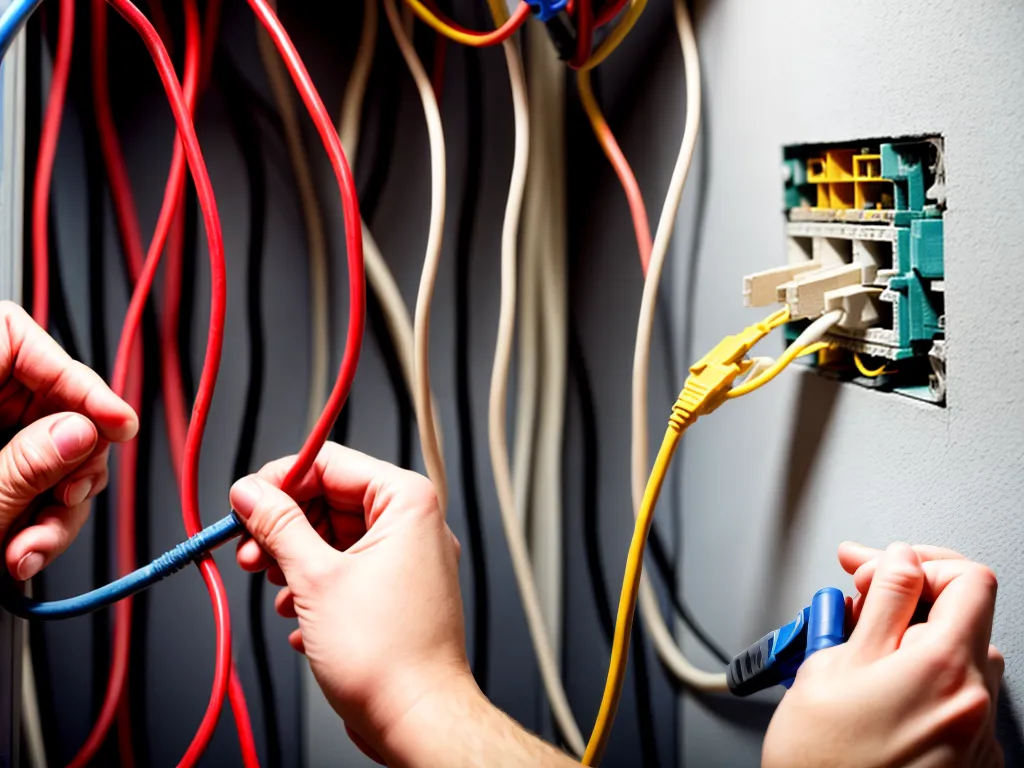
The Hidden Dangers of DIY Electrical Wiring
Electrical work can seem straightforward, but there are serious risks if wiring is not done properly. As a homeowner, you may be tempted to try DIY electrical projects to save money. However, lack of training and experience can lead to lethal consequences. In this article, I will outline the hidden dangers of DIY electrical wiring and explain why you should always hire a licensed electrician.
Dangers of Being Electrocuted
Electricity can kill. According to the U.S. Consumer Product Safety Commission, over 400 people in the U.S. are electrocuted in their homes every year.1 Even a small shock of 120 volts can be fatal if it causes you to fall off a ladder or leads to head injuries. Higher voltage shocks will result in severe internal burning, cardiac arrest, and nerve damage.
Touching live wires is the most obvious electrocution hazard. But electricity can also arc across gaps in a circuit and flow through plumbing or metal fixtures. Faulty wiring leads to short circuits and shock risks. If you accidentally touch a live wire or device while standing in water or on a wet floor, the results can be lethal.
Fire Hazards from Electrical Faults
Faulty electrical work also creates fire hazards. The Consumer Product Safety Commission estimates over 30,000 fires every year are caused by wiring and lighting equipment failures.2 Arcing, sparking wires can ignite nearby materials. Electrical fires are especially dangerous because they can spread rapidly through walls and ceiling spaces before being detected.
Overloaded circuits are a major fire trigger. If you undersize the wiring gauge or exceed the capacity of a circuit, heat builds up in the wires and connections. This heat can melt insulation and surrounding materials, starting electrical fires. Aluminum wiring and loose connections are also fire risks.
Dangers of Damaging Construction Materials
Inexperienced DIYers often cut holes incorrectly or make them too large when trying to feed wires through wooden studs or masonry walls. This can severely compromise the structural integrity and fire resistance of these building materials.
Drilling carelessly into walls or floors also risks damaging gas pipes, water lines, or existing electrical wiring. A punctured gas line leads to a serious gas leak and explosion hazard. A cut water pipe causes massive flooding and water damage. Severing live electrical cables can again lead to lethal shocks.
Hazards from Faulty Grounding
Proper grounding is a fundamental safety requirement in electrical systems. It prevents shocks and allows overcurrent devices like fuses and circuit breakers to operate correctly. However, grounding is also a source of mistakes for DIYers.
If ground wires are connected incorrectly or missed entirely, appliances and fixtures may appear grounded when they are not. This gives a false sense of security, since the grounding system will not operate as intended. Missing or incorrect grounding and bonding also leads to the risks of electric shocks, fires, and equipment damage.
Dangers of Incorrect Electrical Boxes and Covers
Choosing suitable electrical boxes and installing them properly is another area where inexperienced DIYers make dangerous mistakes.
- Overloaded electrical boxes become overheating risks.
- Boxes that are too shallow prevent wires from being connected securely.
- Knockout holes that are removed incorrectly compromise the structural integrity of the box.
- Using outdoor boxes indoors leaves openings for water to enter.
- Missing cover plates on boxes allow sparks and arcing.
- Incorrect covers don't fully protect the wires within.
These kinds of wiring box errors directly expose the connections to fire and electrocution hazards.
Risks from Poor Circuit Protection
When amateurs size circuit breakers and fuses incorrectly, it leads to inadequate overcurrent protection.
Overloaded circuits may overheat without tripping breakers. Undersized wiring can exceed safe current limits before a fuse blows. Both these situations can start electrical fires.
On the other hand, oversized breakers and fuses fail to provide full shock protection. Defective connections or short circuits may persist, posing electrocution risks to anyone who touches live parts of the circuit.
Dangers from Messed-Up Wire Connections
Secure, intact electrical connections are the core foundation of safe wiring. However, joining wires correctly and making solid contacts requires know-how that amateur electricians lack.
Symptoms like flickering lights, outlets sparking, and appliances losing power hint at loose or incomplete wire connections. But the real hazard is the risk of arcing across small gaps in faulty connections. Arcing generates extreme heat that can ignite surrounding materials and start electrical fires.
Other issues like connecting multiple wires to a single terminal, incorrect wire stripping, and joining incompatible metals also cause overheating and fire hazards. Screw terminals may loosen over time as well, compromising electrical connections.
Risk of Legal Liability
Beyond direct physical hazards, you may also face legal and insurance issues after DIY electrical incidents and accidents.
Your home insurance policy likely excludes coverage for damage caused by unlicensed electrical work. And if your DIY wiring causes injuries or property damage for others, you can be sued and held personally liable.
Any form of compensation could end up costing you enormously more than if you had hired a professional licensed electrician in the first place.
Key Takeaways
- Electrical systems contain life-threatening dangers that DIYers are unaware of.
- Lack of knowledge and training leads amateur electricians into hazardous mistakes.
- Even simple wiring jobs harbour risks of electrocution, fires, and equipment failures.
- Licensed electricians undergo years of training and know all the appropriate safety codes and standards.
- Hiring a pro to handle any electrical work provides maximum protection for you and your family.
References
-
U.S. Consumer Product Safety Commission. "Estimates of Non-Fire Carbon Monoxide Total Poisoning Deaths and Injuries." November 2021. https://www.cpsc.gov/Newsroom/news-releases/2021/new-cpsc-report-shows-continued-increase-in-non-fire-carbon-monoxide-deaths-and-injuries
-
U.S. Consumer Product Safety Commission. "Electrical Fires." https://www.cpsc.gov/Safety-Education/Safety-Guides/Fire/Electrical-Fires